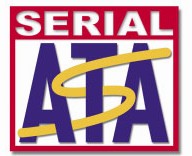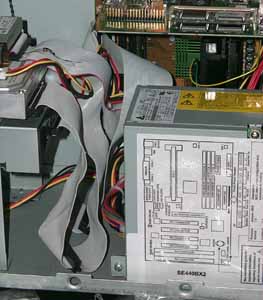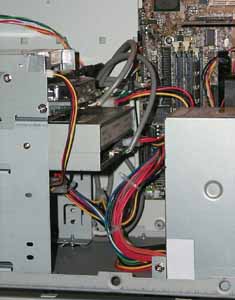Intel IDF Report #2 - Serial ATA & USB 2.0
by Mike Andrawes on February 16, 2000 12:53 PM EST- Posted in
- Trade Shows
After the demonstration of Willamette during the first few hours of IDF, we could hardly expect anything nearly as exciting. While that thought may or may not be true, depending on your perspective, there were definitely a number of interesting announcements and demonstrations throughout the day. Two of the biggies involved future interfaces - Serial ATA and USB 2.0.
 Serial ATA
Serial ATA
The vast majority of users out there use the good old ATA, or IDE, interface to hook up their hard drive and CD-ROM. And why not? It’s cheap, readily available, and relatively easy to configure. However, the roots of the standard are over 15 years old and we’re quickly reaching the limits of how far we can extend it with the upcoming ATA100 standard.
This old standard is now being referred to as Parallel ATA since it transfers data in a parallel fashion in other words, multiple bits of data are transferred simultaneously. The shortcomings of this setup are numerous. Simply by being a parallel interface, the pin count is quite high 26 signal pins per channel, plus power and ground. Along the same lines, those 80 conductor ATA66 cables are relatively expensive (from an OEM perspective) and severely clutter a case, which in turn impedes airflow. Further, all ATA designs require 5V tolerant transceivers that complicate things at a time when we’re pushing towards lower and lower voltages throughout our systems. But perhaps the biggest problem is the fact that there is no easy way to push the standard much further it looks like 100-133 MB/s would be the limit unless new signaling were introduced, which of course raises a number of other issues that we won’t get into right now.
As the name suggests, Serial ATA transfers data serially, which means one bit at a time. The benefit is that pin count of the interface can be significantly reduced, which in turn means cables can be smaller and more efficient. In fact, there are only 4 signal pins and just a few more for power and ground. Since this is a new standard, the opportunity is there to define new signaling with more flexible voltage tolerances.
The Serial ATA specification is being designed with the future in mind, but backwards compatibility is being maintained in a number of ways. Most important is the fact that Serial ATA is software/register compatible with Parallel ATA, which means there is no need to rewrite anything at the driver or OS level.












0 Comments
View All Comments